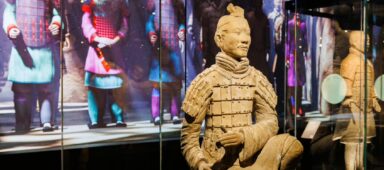The coastal enclave of Canggu in Bali is the island’s hot spot for creative expression.
Photography Putu Sayoga

Art permeates virtually every part of Balinese culture. From intricate carvings to dance, creativity stands at the core of the Indonesian island. Coupled with natural beauty, Bali is a rich source of inspiration for self-expression. The emergence of a vibrant street art scene in the tourist enclave of Canggu is a case in point.
Once a sleepy coastal town, Canggu has been attracting both Indonesian and foreign visitors eager to soak up the Bohemian vibe and leave their artistic mark. It is not surprising that the neighbourhood’s walls, fences, and columns are gradually being taken over by eye-popping murals.
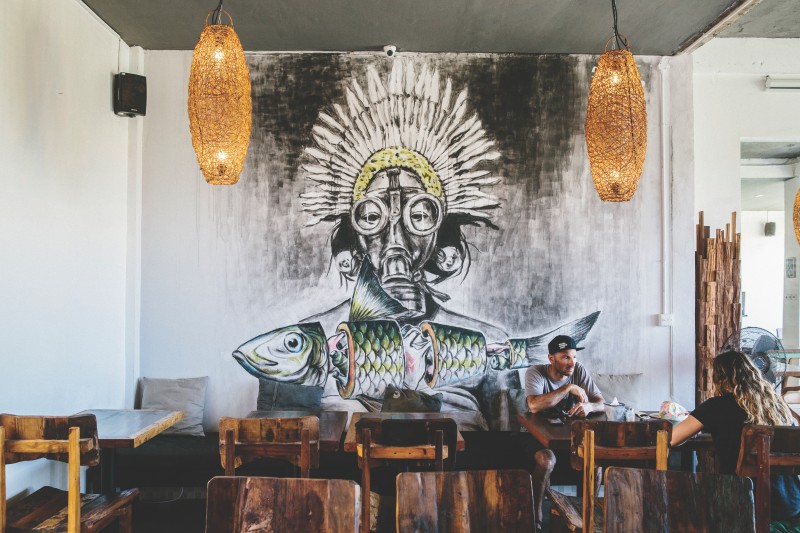
ALLCAPS, a gallery and art supply store, has been instrumental in the growth of Canggu’s street art scene by bringing together local and international artists for regular spray jams. The community space is run by Swiss-born street art enthusiast Julien Thorax, who has been working to raise awareness of the art form since settling on the island in 2015.
“Bali’s street art scene is growing from strength to strength. There are a lot of young Indonesian artists just starting out and a large number of foreign street artists who come here to forge connections with local artists,” says Thorax. “This mix of nationalities and cultures has been encouraging local artists to go beyond just tagging. These days, some Indonesian street artists are even commissioned to do murals at local bars and cafés.”
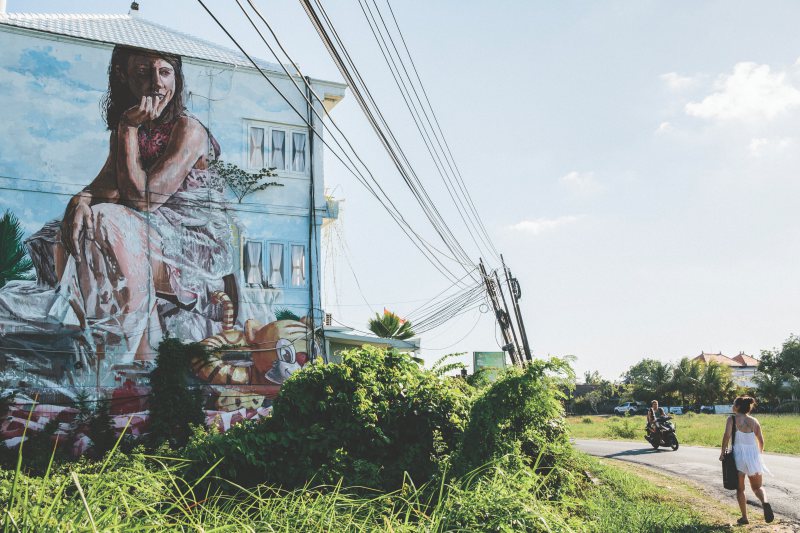
Standing in stark juxtaposition to the surrounding rice fields and beaches, the bold and alluring images combine modern and traditional motifs. Many local street artists choose to remain close to their roots, blending traditional cultural icons with a contemporary ethos.
One of the Balinese artists is Dnztwo, who started painting murals in 2005 after a friend inspired him to pick up a spray paint can and try his hand at the modern-day craft. “My style is contemporary. I love combining realistic portraits with patterns. Sometimes I use traditional Balinese motifs in my pieces as a symbol of my heritage,” Dnztwo says. “My art talks abut maintaining cultural values in the modern era when there are so many influences around that it is becoming difficult to keep up with them without changing the values of the Balinese culture.”
Many murals around Canggu aim to raise awareness about important issues affecting the holiday island, such as rampant development and environmental pollution.

Quint is a Sumatra-born Indonesian artist who combines graffiti with stencil art. While he is quick to admit that he tries to stay away from politics or issues associated with tourism, his murals in Canggu certainly send a strong message. His pieces usually feature monochromatic maidens in determined poses. “I did my first stencil piece in Canggu in 2011, at a time when there were still more rice fields in the area than buildings,” Quint says. “My art is inspired by natural beauty and love. A lot of my murals are of women, as to me they represent beauty and love. I also sometimes paint animals as a representation of the uniqueness of Bali’s nature.”

Canggu’s walls have recently also become a playground for international street artists. According to Thorax, around 75 percent of the murals have been created by foreign artists. One of these painters is Jay Fanakapan, a London-based artist who started out in the 2000s. His signature pieces experiment with optical illusions, and he is best-known for his 3D hyper-realistic chrome balloons. “I painted a few throwies in Bali but also did two decent pieces in Canggu. One by the beach highlighting the plight of Bali’s dolphins, which unfortunately are still used to entertain people on the island. The other and more popular piece is my High 5. I painted it in silver chrome, so it reflects the surrounding rice paddies.”
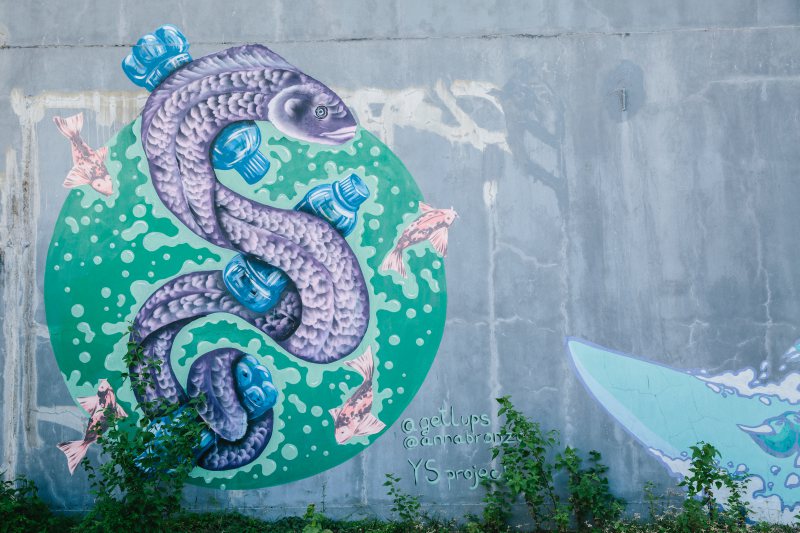
One of the few female street artists who has left her footprint in Canggu, Anna Bronza says she enjoys collaborating with local artists. Originally from Saint Petersburg in Russia, Bronza has spent the past few years in Bali working on murals with both foreign and Indonesian artists. While her background is in interior design and architecture, her street art career began when she painted huge Hawaiian flowers on the wall of her apartment. “I love splashes of bright colour – mainly cartoon style – as well as monochrome graphics. My manifesto in life and art is ‘only love,’ which means that I am against violence, aggression, bullying or negativity,” she says. “Bali influences my art, both in good and bad ways. While I am inspired by the island’s natural beauty, plastic pollution on the island has pushed me to criticise it in my art.”
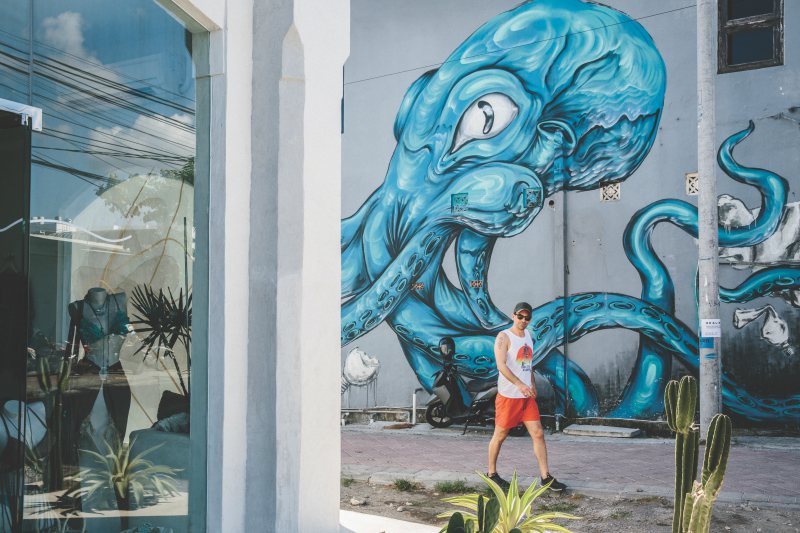
There is little doubt that the aesthetics and symbolism of Canggu’s street art are gradually transforming its creative landscape. Once only found on the walls of abandoned buildings and down deserted alleyways, the visual art form is making its way into trendy cafés and major cultural hubs. This accessibility is precisely what first drew Thorax to aerosol imagery. “Street art brings art to the people,” he says. “While most artists in Bali still paint what they think is beautiful, more and more are using their art to share a message. Both local and international artists are concerned about important issues, reflecting this in their work. Whether they inspire or confront, these vibrant images can have a huge impact.”
